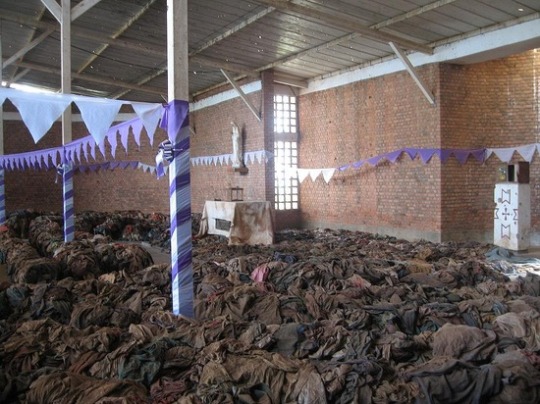Twenty years ago today, a plane carrying Rwandan president Habyarimana was shot down. The next day marked the start of the Rwandan Genocide. Over the next 100 days, it is estimated that up to one million Tutsis were slaughtered.
In the summer of 2012, I traveled to Rwanda to see the ongoing reconciliation process first-hand in hopes of learning more about peace and forgiveness. The truth is, I had more fun in Rwada than I had anticipated. I don’t feel like I learned much, or that I had a big “takeaway lesson.”
The SPRINT core at SPU told us that everyone debriefs in their own time. Some of us would process stuff quickly and readjust well, some would have a harder time, and for some it would take a lot longer. I felt like I had adjusted well and could put the trip behind me. As the weeks turned into months, the memories of Rwanda crept back into my thoughts, but this time, they weren’t the fun memories of spending time with my awesome team. This time, they were the memories of the reality of the genocide.
I found myself thinking of the small church in Nyamata where ten thousand women, men, and children were killed by Hutus using machetes, clubs, and guns. The church has one entrance. Once the killers arrived, there was no escaping. You were dead before any blow hit you. The church is kept exactly as it was after the massacre. The clothes of the victims are piled high on the pews. There are bullet holes in the door and metal ceiling. Most disturbing were the dark spots on the brick walls and the high ceilings – blood. Our tour guide explained to us that the hutus would kill babies by throwing them at the brick walls. Outside, behind the church, there are mass graves. You can walk in them and see bones and skulls neatly placed on high shelves. A multitude of small coffins held the remains of ten Tutsis each.
This is just one of many instances that I was confronted with the harsh realities of the genocide throughout my three weeks in Rwanda. I think my whole team wrestled with the question “now what?” It was obviously too late to do anything about what had happened. So why were we there? What did we learn? What were we supposed to tell people when we got home? Luckily, we had a great group of hosts from Rwanda Partners to hash out these questions with. Theo brought this wisdom to the table: “Jesus said two things in his ministry, ‘come and see’ and ‘go and tell'”. We had already come and seen, and now we had to follow through on the second command. My team and I were to go home and tell everyone about the genocide and the reconciliation that is possible despite it.
Admittedly, I haven’t done my part. As I said, I came home high off all the fun that I had, and numb from the hard-hitting realities I experienced. Luckily, it’s not too late to keep good on my promise to Theo.
So, people, here goes…
20 years ago, evil stepped foot into Rwanda. 20 years ago, the build-up of colonialism and planted “ethnic” tensions erupted into a murder spree that killed 70% of the country’s tutsis. 20 years ago, normal people turned their backs on God and chased their neighbors, coworkers, students, and friends with machetes. 20 years ago, a mother was forced to eat the severed fingers of her dead baby. 20 years ago, families were thrown alive into a well simply for having long, pointed noses.
As hard as it is to swallow, these are facts. As hard as it is to believe, reconciliation is possible.
20 years later, hutus and tutsis live in peace. 20 years later, a hutu builds a home for the mother of the children he killed. 20 years later, Rwanda Partners continues the reconciling work of Christ throughout the country. 20 years later, hope is blooming in a country that was decimated by hate.
As unbelievable as that seems in our Western, grudge-holding culture, these are facts. As hard as it is to believe, reconciliation is real.
Don’t believe me? Take a look at this New York Times Article: Portraits of Reconciliation
Clothes piled onto pews in the Nyamata church. (Photo not my own)
I remember seeing pictures of “a church” (which one, I do not know) in Rwanda after the murders. Bodies were strewn everywhere and I remember feeling the horror of that scene, as well as I could from my safe home here in Richland, WA, USA. I cannot imagine what it must have been like for you to have seen this picture in person. Please continue you share as God leads you. There is much for Him to teach through you and much for us to learn.
I love you! Mom
“To whom much is given, much will be required”. I am so glad to read this post. I believe this will be a cornerstone to your future and there will be no end to how God uses this in your life.
It must have been so amazing to See Forgiveness. It’s such a unexpected gift, an impossible in our own minds but where God is, where true Love is, it is Possible.
Keep telling and sharing.
Love,
Aunt Theresa
Thank you for writing this. It is powerful. I have never been to Rwanda but our church, Four Winds Anglican Mission, is affiliated with the church in Rwanda. Someday I hope to visit there and see remembering and reconciliation firsthand.